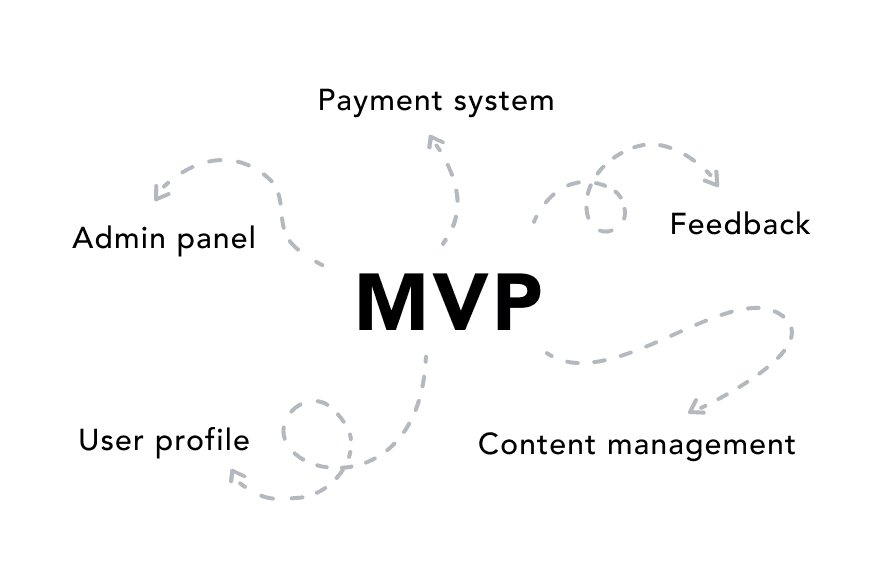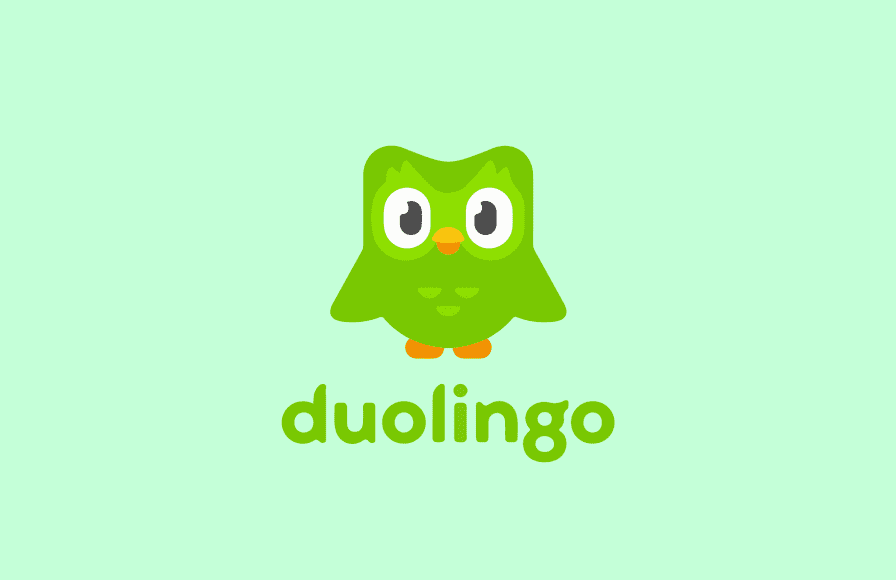LMS Functions and Features List to Create Customers Value
11 min read
Page Content
Emerging Educational Trends 2022
To form a list of basic features of an LMS for e-learning courses, it’s necessary to check whether certain functions are relevant and in demand in the modern market. Further, we will consider what trends currently prevail in the e-learning industry. Some are somewhat innovative, and some have long become an inalienable tool of any training software. You can use them as part of the core functionality or add them to an existing product to enhance users’ engagement and increase profits.
Gamification
It’s an absolute must-have in 2022. Gamification is present in all training programs, from training games to platforms with courses. It helps to increase motivation and learning efficiency (confirmed by 67% of students surveyed), as well as avoid boredom, which is the #1 reason why many users abandon learning. It shows excellent results in both corporate training programs, increasing company productivity by 50% and employee engagement by 60%.
It is an indispensable tool, embodied through such simple LMS functions as reward Collecting, quizzes, leveling, and animations. But you can use it even more! Create storytelling, add more complex game mechanics and challenges, including periodic and group ones, add mini-games, or create full-fledged educational games.
VR/AR
VR-based mobile apps are expected to be the fastest-growing by 2024, with a ratio of 51.9%. If you want to create an LMS system with advanced gamification and have enough budget, these technologies are top-notch.
First, such technologies make learning entertaining, so more than 80% of respondents prefer VR-based rather than traditional training.
Secondly, the knowledge gained through AR/VR is assimilated many times more effectively. According to the study, students who used virtual reality learned 80% of the material, and students who studied traditional methods mastered only 20% of it.
Third, such training is four times faster than the standard teaching methods.
Personal approach
Personalized learning is a global trend because it allows edTech businesses to expand and retain their audience.
First, due to variability. By allowing students to customize the learning process, for example, by offering language learning focused on business language, preparation for testing, or speaking skills, you reach several types of students at once.
Secondly, thanks to the better fit of the curriculum. It’s impossible to create a course that suits and satisfies everyone equally. It’s better to allow the learners to adjust their education themselves. Artificial intelligence, an advanced search system for materials/courses, the feature of adding extra materials, offers based on previous users’ purchases, and the opportunity to share experiences with other students and instructors - these are LMS key features, that will come in handy here.
Third, it turns e-learning from a one-time purchase into a continuous process developing according to the student’s goals.
Micro-Learning
95% of instructors consider microlearning to be better than standard seminars, based on students’ preferences. Therefore, this method gives LMS vendors much more customers.
58% of employees indicate that they would spend more time on training if it was divided into small parts. It makes microlearning an indispensable part of the LMS feature list for businesses that practice corporate training.
Now such successful projects as Duolingo, Codecademy, and TalentLMS use microlearning. It makes applications more convenient, learning more enjoyable, not tiring, and accessible anywhere and anytime, even on the way to work. And at the same time, microlearning engages to go deeper and deeper, which increases monetization and defines the application’s commercial success.
Small steps’ encouragement
The trend of small victories is often used in microlearning, as well as in blended learning.
In the first case, it’s an organic addition: for a short lesson, the user receives a logical conclusion and emotional reinforcement as a reward, ranking, or achievement.
In the second case, this tool allows you to keep students’ attention on the subject, and stimulate interest in learning, especially when studying complex heavy topics.
LXP
This type of edTech product embodies almost all of the above trends. In essence, it’s the LMS of the future. Such applications provide users with virtually unlimited opportunities to customize the learning process. For example, users can share materials (including ones from the other LMS or different types of sources), rate them, and leave feedback.
Unlike LMS, where instructors create courses that can be studied unchanged, LXP provides flexible, customizable products.
In addition, instead of the usual search engine using filters and categories, LXP uses artificial intelligence that generates personal suggestions based on student data analysis.
Planning to build an LMS application?
Professional market analysis, tech advice, and preliminary assessment - get all these for free by simply contacting us!
Contact usLMS Features for Million to Boost App’s Value
MVP LMS Features Checklist

-
User profile
The student should have tools for editing the user interface, tracking progress, viewing, and modifying learning paths. It would be great to include feedback from the instructor, reward collecting, and additional opportunities for customization. It will increase learner engagement and positively affect his experience.
-
Admin panel
You need to provide an extensive admin module with different access levels.
It should include an LMS reports function, data migration tools, abilities for editing the user profile, course management for the author, also tools for managing the entire application for the main administrator.
-
Payment system
The more convenient payment options - the better. Investigate which payment services and banking are most in-demand in your target region - they will be your must-haves.
Also, take care of security when transferring funds - the payment gateway is perfect in this case.
-
Feedback
This feature is probably the most important because further LMS functionality improvement will base on it. Provide users with the ability to leave feedback and add suggestions. It will also be cool to add rankings for a better understanding of customer preferences.
-
Content
If you have a fixed amount of learning content, prepare it in advance. If your service involves self-creation, editing, and updating materials by instructors, you should provide tools for this at the MVP stage.
5 LMS features for inclusive education

More than 5 Mln children worldwide are diagnosed with ADHD. The prevalence of this diagnosis is constantly increasing. In the USA in the late 90s, the percentage of children aged 4-17 years who had ADHD was 6.1%. According to 2015-16 data, this indicator crossed the 10% mark.
Inclusive education helps people with special needs successfully integrate into society and have equal learning opportunities with other students.
Therefore, when creating an E-learning platform for them, consider certain moments in the design and features.
-
Responsive design. People with special needs often have problems with concentration. To help them understand the material, follow a simple structure of slides so as not to distract the student, use a single type design, and get rid of intrusive distracting pop-ups, unnecessary elements, and animations. But develop a variety of slide dynamics to prevent boredom.
-
Microlearning. Course segmentation into parts, roadmap, and clear structure. These top learning management system features will help people with ADHD concentrate and not lose focus from the educational process.
A common problem of people with ADHD is hyperfocus. It will help the organization of classes, divided into small parts, with a system of notifications about breaks.
-
Feedback. Use the principle of small victories because people with ADHD are more receptive to encouragement. Make the incentive personalized to enhance the effect. You can complete it using an artificial intelligence bot, which will indicate users’ personal results and names in the feedback messages.
-
Gamification. Be careful when using gamification to avoid causing socially undesirable behavior in students. Hyper-focus, extra-competitiveness, and emotional reactivity of people with ADHD make training activities with leaderboards and battle modes, not the best tools. While quizzes, the ability to track progress and collect awards will only be a plus.
-
Advanced search and recommendations are the key LMS must-haves. But people with special needs can feel confused by plenty of categories and filters that need to be adjusted to find the right course. Therefore, it’s better to use selections based on preferences or on the student’s previous purchases. Artificial intelligence, which will analyze data and create proposals based on it, will be a great tool here.
How Do We Increase Learner Engagement by Using the Right LMS Features?
- Encouragement. Rewards for regular application visits, a certain number of completed topics/challenges, special events, ranking of the finished level, and bonuses for the correct answers. All this adds an incentive to learn regularly and improve progress.
- Risk. A limited number of lives or attempts to pass the level make the game process more attractive, preventing the student from getting bored.
- Structure. A clear curriculum, and leveling, allow learners to track their progress. Let the user feel the learning results - with the help of such common LMS platform features as progress tracking (to see how many percent of the material has already been passed and what part of the course remains) and thematic awards.
- Social environment. Nothing is more stimulating than the surroundings. Use social learning tools: battle mode, online quiz duels, video conferencing tools, player rankings, group events, and themed activity awards to give students an intense emotional experience that will help them progress.
Do technologies matter?

When creating an LMS implementation plan, consider the methodology and tech stack.
The technological component affects such fundamental aspects of development as:
-
Budget
Choose technologies that enable hybrid development to optimize costs without sacrificing codebase quality.
Unlike native development (for example, using java swift), where you have to create an application separately for iOS and Android platforms, hybrid development allows you to create a single code base. That is, you save on development hours and get top-grade performance.
Developers’ salary also matters. While the flutter developer rates start at $30/per hour in Western Europe, the React developers are available from $20/per hour.
Another essential point is the server part. Instead of creating and maintaining your servers, use cloud-based software such as AWS. It will be more profitable.
-
Team recruitment
Technologies are vital as the better the community support, the more readily to solve development challenges. The easier the technology is to learn, the easier it will be for you to find engineers. While to find the ionic developer you need and list 3 months, react technology is more common and popular, so the pool of talents gives a possibility to find developers in 2-4 weeks.
The language barrier is also significant. For example, Vue has all the documentation in Chinese, which means a drastically narrowed choice of specialists.
-
Project improvement
The MVP concept assumes that after the completion of the minimum set of main LMS functions, a build-measure-learning cycle begins. The application can be significantly changed and expanded based on user feedback. It’s crucial to have a sufficiently flexible and easily scalable tech base.
For all the considered aspects, React Stack will be an excellent option. Brilliant performance, 100% community support, relatively easy-to-learn technology, the possibility of hybrid development, incredible flexibility, and speed - these are React Stack characteristics that will lead your e-learning solution to success.
Choosing a tech stack, but lacking technical experience?
Just write - and get a free consultation from an expert engineers team!
Contact usLMS features Best Practice Spotlight

Let’s check how well-thought-out and aptly picked LMS system features work for product success. To do this, let’s consider Duolingo - one of the best and most widespread online course platforms.
-
Innovation of the first functions.
At the time of the service launch, there was a shortage of software for high-quality translation and language training on the world market. Duolingo’s creator became an innovative LMS vendor, creating a free-to-user platform that instantly broke the language barrier by allowing the translation of anything from news to books while improving language proficiency.
Such features, which were unique at the time, did their job: already in 2011, the sum of investments in Duolingo’s beta version exceeded $3 Mln, and the number of users reached 100000!
-
Gamification for increasing the client base.
With the mobile application launch in 2012, Duolingo opened up new possibilities for the user experience. They added gamification, which is an absolute classic today. These were pictures, videos, push notifications, and audio translation functions.
As a result, the platform funding grew to $18 Mln. As for users, there were already 25 million registered accounts, and more than 12 million were active.
-
Blended training and certificates.
In 2014-2015, Duolingo began active cooperation with educational institutions. As a result, users received training programs for schools and certificates.
The introduction of top LMS features in traditional education has been of such interest to institutions that Duolingo for schools has already received more than 100,000 registered instructors.
Certificates have also become in demand due to their affordability (only 20 dollars per test) and compliance with requirements similar to TOEFL (DET also includes testing reading, writing, listening, and speaking skills).
Such certificates are currently accepted by more than 1000 institutions, including Columbia University, Stanford University Undergraduate Admissions, and Harvard Extension School.
In addition to institutes, businesses also use certificates for employees. For example, the Uber company uses the Duolingo English test to implement the “Uber English” service to earn additional income and improve service quality.
As a result of instant development and the accurate selection of features, Duolingo has grown to 200 million users, and its value was estimated at $700 Mln. At the same time, the platform has retained its original philosophy - to provide high-quality free language training for everyone, anywhere.
Conclusion
- A properly selected learning management system features list can make capabilities for monetization and extension of the application almost unlimited.
- Implementing global trends such as microlearning, gamification, artificial intelligence, virtual and augmented reality, and personalization will make your application relevant.
- Who is your target audience, and what problems does your app solve? - Determining these priorities will help form a complete in-demand feature list for students.
- The distribution of features set into essential and additional ones (according to the MVP model) will accelerate receiving the first feedback and funding, significantly reducing financial risks. The MVP model, Scrum/Agile methodology, and fitting technical stack are the key education app ideas to optimize costs, high quality, and commercial success of the product.
Consider these points to make a top-notch LMS features list. It won’t hurt to get some professional technical advice on this matter. It’s where a trustworthy e-learning app development company will come in handy as soon as they have enough expertise in creating edTech solutions to make your business idea a success story!
#e-learning
#MVP
#productivity